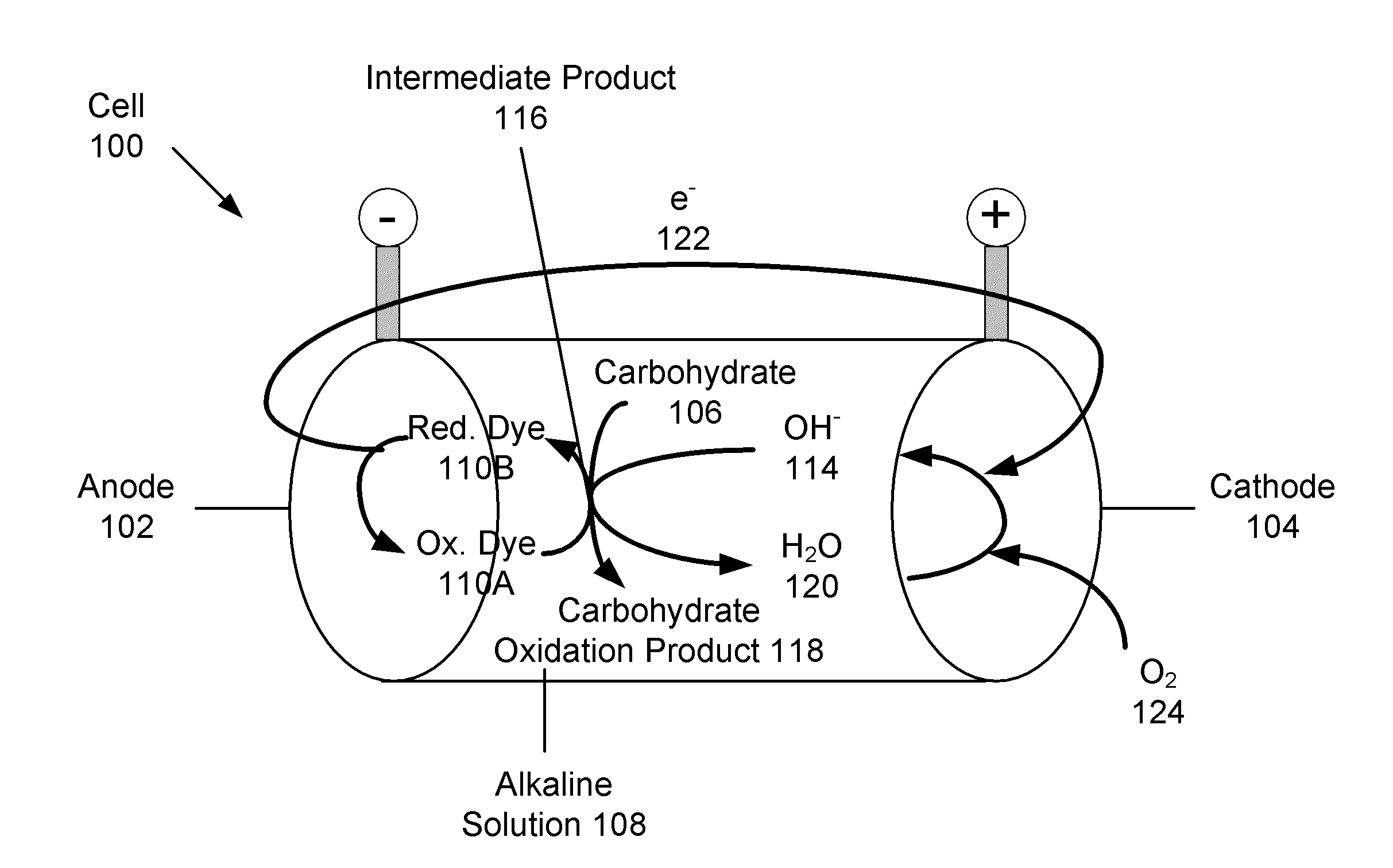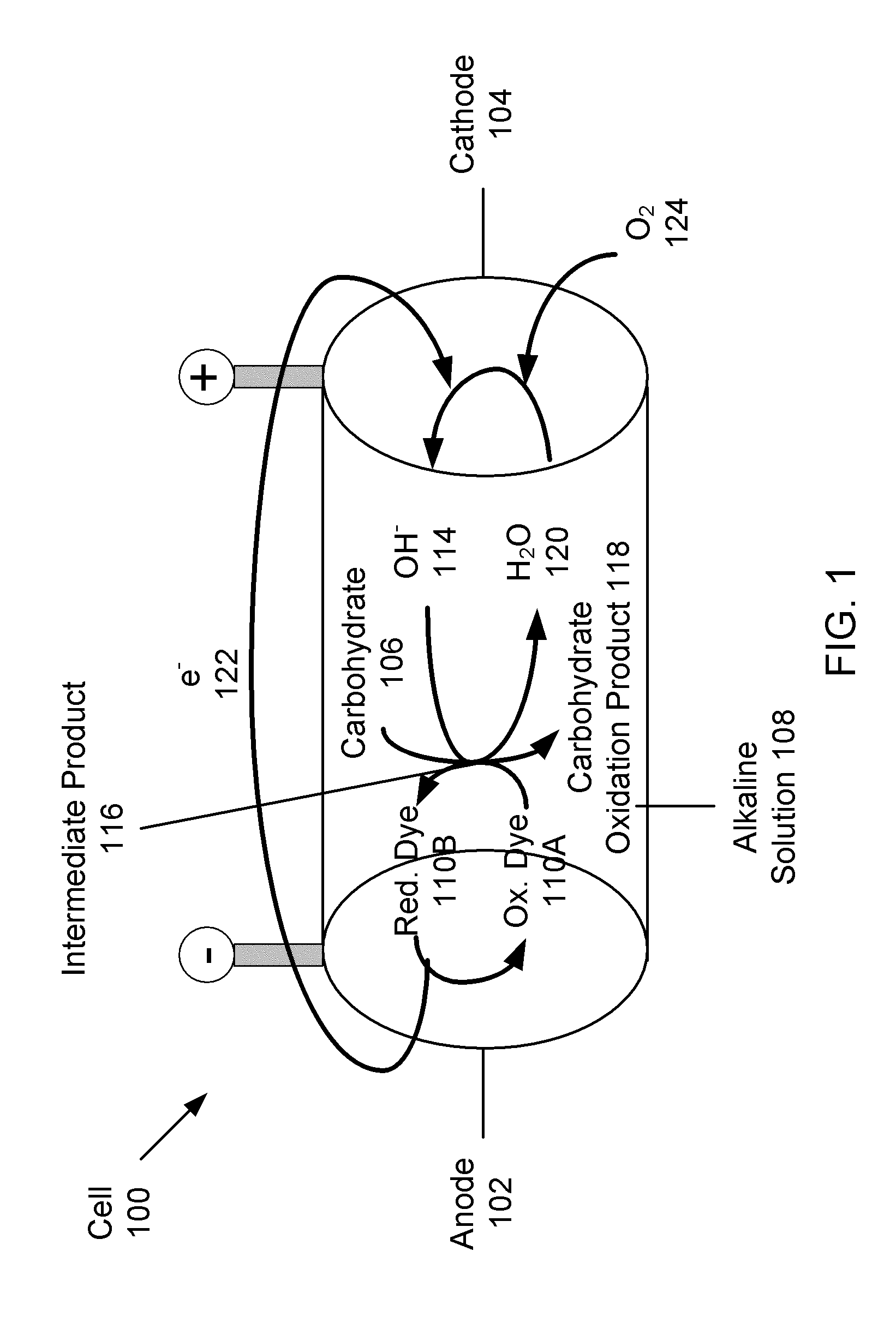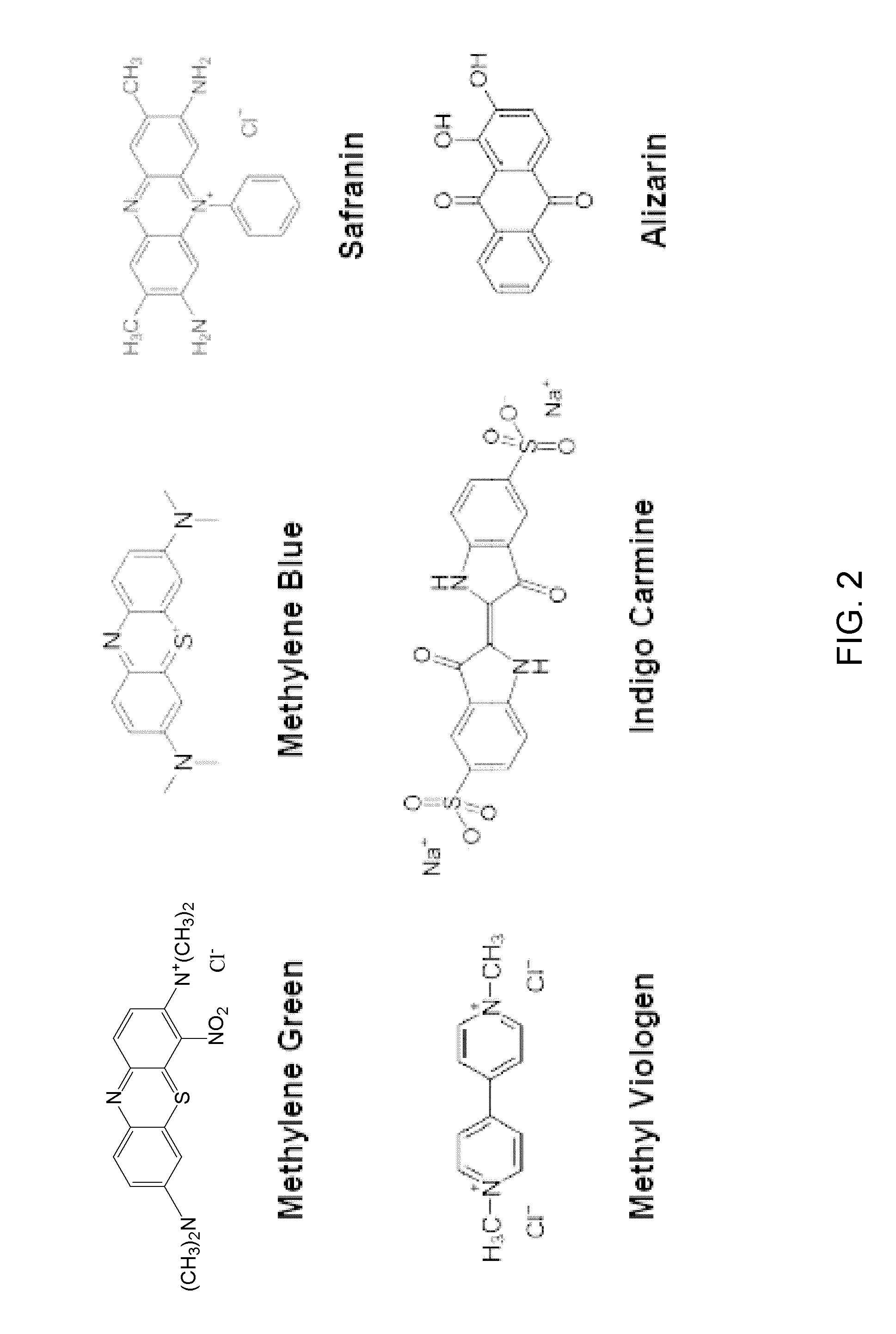Carbohydrate anode for fuel cell and battery applications
a carbohydrate anode and fuel cell technology, applied in the field of power generation, can solve the problems of affecting the design of abiotic fuel cells using carbohydrate fuels, affecting the economic benefits of abiotic fuel cells,
- Summary
- Abstract
- Description
- Claims
- Application Information
AI Technical Summary
Benefits of technology
Problems solved by technology
Method used
Image
Examples
example 1
Glucose Alkaline Cell Having a Single Glucose Concentration
[0052]FIG. 4 illustrates the performance of an embodiment of a glucose alkaline cell, where the open triangles represent the cell voltage and the open circles represent power density. The alkaline solution included about 2 M glucose in about 3 M KOH and about 28 mM of a methyl viologen solution. Substantially no stirring or agitation of the solution was applied to the cell during power production.
[0053]In this fuel cell, an open circuit voltage of about 0.65 V was achievable with little dependence on the glucose concentration. In this case, the anode was at about −0.63 V versus Ag / AgCl, which is approximately close to what is expected for the formal redox potential of methyl viologen. The air-breathing cathode was at about 0.02 against Ag / AgCl. The ability to achieve the expected potential at the anode indicates the facile kinetics exerted by the electrode to reach equilibrium on the electrode surface, with respect to the me...
example 2
Glucose Alkaline Cell Having Varied Glucose, Methyl Viologen, and KOH Concentrations
[0054]Three experiments were conducted in Example 2 to examine the effects of varying glucose concentration, methyl viologen concentration, and KOH concentration on the performance of the cell. In each case, the baseline concentration for the three constituent reagents was the same as in Example 1, with the ratio of glucose:methyl viologen:KOH about 2 M:about 28 mM:about 3 M. The concentration of glucose was varied within the range of about 0.5 M to about 2 M, the concentration of methyl viologen was varied within the range of about 5 mM to about 28 mM, and the concentration of KOH was varied within the range of about 0.5 M to about 3 M. Substantially no stirring or agitation of the solution was applied to the cell during power production.
[0055]FIGS. 5A-5C illustrate polarization curves (steady state cell voltage versus polarization current density profiles) showing the dependence of cell performance...
example 3
Glucose Alkaline Cell Having Different Concentration Ratios of Glucose to MV and KOH Concentrations
[0057]Two experiments were conducted in Example 3 to examine the effects of varying the ratio of glucose concentration to methyl viologen concentration and the concentration of KOH on the performance of the cell. The results of the glucose to methyl viologen ratio experiments are illustrated in FIG. 6A, with the dye mediator concentration varying with the range of about 5 mM to about 28 mM and the glucose concentration varying within the range of about 0.5 M to 2 M in about 3 M KOH solution. The results of the glucose to KOH concentration experiments are illustrated in FIG. 6B, with the glucose concentration of about 2 M and the KOH concentration varying in the range of about 0.5 M to about 3 M.
[0058]In FIGS. 6A-6B, the power profiles reflect two distinct patterns in the behavior between dye (or glucose) and KOH. In the case of dye and glucose, it may be observed that the power profile...
PUM
| Property | Measurement | Unit |
|---|---|---|
| operating temperature | aaaaa | aaaaa |
| operating temperature | aaaaa | aaaaa |
| temperature | aaaaa | aaaaa |
Abstract
Description
Claims
Application Information
 Login to View More
Login to View More - R&D
- Intellectual Property
- Life Sciences
- Materials
- Tech Scout
- Unparalleled Data Quality
- Higher Quality Content
- 60% Fewer Hallucinations
Browse by: Latest US Patents, China's latest patents, Technical Efficacy Thesaurus, Application Domain, Technology Topic, Popular Technical Reports.
© 2025 PatSnap. All rights reserved.Legal|Privacy policy|Modern Slavery Act Transparency Statement|Sitemap|About US| Contact US: help@patsnap.com



